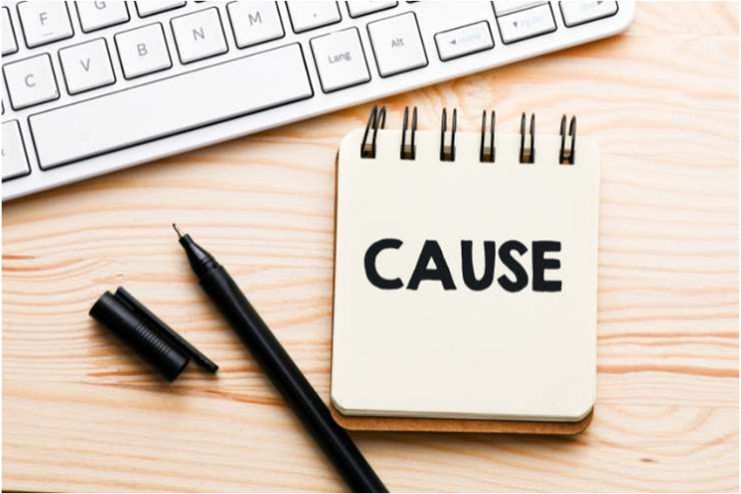Affiliate Disclaimer
Some links in this article are affiliate links. We may earn a small commission if you make a purchase through these links, at no extra cost to you. We only recommend products we find useful to our readersImagine one day finding a surprising lump when you run your fingertips up your chin. Your mind immediately races with questions: What is it? Do I need to worry? Many individuals experience chin lumps at some point in their lives. These lumps might cause fear, curiosity, or even terror, depending on whether they are a minor flaw or a symptom of a severe health problem.
A temporary pimple or swollen lymph node could cause certain chin lumps, while other lumps could be signs of more severe illnesses. Understanding their nature, causes, and possible consequences is crucial. This article delves deep into everything you need to know about chin lumps—what they are, why they appear, and how to address them—empowering you to distinguish between the ordinary and the extraordinary.
What is a chin lump?
A chin lump is the swelling of a particular area of the chin. This lump can be of various types, such as a nodule, cyst, tumor, or confusion. It can form for different reasons, such as inflammation, infection, trauma, or tumors.
Depending on its size and cause, the lump can be single or multiple, soft or rough, painless or painful. These lumps can also grow rapidly, creating more health complications.
Most often, lumps can form due to boils or abscesses. Sometimes, the infection may cause swelling of the lymph nodes near the neck in the jawbone. Other conditions, such as certain types of bug bites, may trigger the accumulation of blood in the tissues.
As both benign and malignant tumors look similar to the soft tissues, it is essential to carry out a biopsy of the part to identify whether cancer is present or not. Fluid-filled cysts may also look like a lump most of the time. While the lump will often occur due to infection or inflammation, you may also have certain lumps since birth.
To prevent future complications, it is important to seek the help of a medical expert as soon as possible after noticing the lump.
Symptoms of a lump under the chin?
 The problem of chin lump can accompany various symptoms. It is important to note that these symptoms also depend upon the underlying disease, if any. Some of the usual symptoms of a lump under the chin include:
The problem of chin lump can accompany various symptoms. It is important to note that these symptoms also depend upon the underlying disease, if any. Some of the usual symptoms of a lump under the chin include:
- Tenderness or pain
- Swelling with redness
- Discharge or pus
These symptoms may also occur with other symptoms, which you should watch out for. They include:
- Fever, chills
- Cough
- Headache
- Sore throat
- Runny nose
- Weight loss
- Sweating
- Pain, joint stiffness
- Sweating
Common causes of Chin lump
 Numerous causes can cause a lump under one’s chin. Some common causes include infection, inflammatory disease, tumors, benign cysts, and cancer.
Numerous causes can cause a lump under one’s chin. Some common causes include infection, inflammatory disease, tumors, benign cysts, and cancer.
Some of the injuries may also cause the problem of chin lumps. These injuries include
- Head injury
- Broken bones
- Fractured jaw
- Bite injuries or insect sting
- Hematoma
A lump under the chin can develop due to a variety of causes. These consist of:
- Enlarged lymph nodes
- Enlarged tonsils
- A sting hive or bug bite
- Boils
- Cysts
- Acne
- Mumps
- Stones in the salivary ducts
- Benign growths such as lipomas or dermatofibromas
- Hematomas, which are collections of blood beneath the skin
- Goiters, which are caused by swelling of the thyroid
- Some types of cancer
The following sections examine some of these causes in greater detail.
Lymph nodes are typically tiny; the immunological response might cause them to expand. It could feel like a lump under the chin if the lymph nodes surrounding the jaw and neck expand. Infections frequently cause swelling of the lymph nodes. Here are a few examples:
- Flu or cold
- Ear infections
- Sinus infections
- Measles and chickenpox
- Dental abscess, mononucleosis, and strep throat
- Lyme illness
If the cause is an infection, the swelling should go away in one to two weeks. However, there are more causes of lymph node swelling, including cancer and autoimmune disorders.
Doctors should treat some of the severe and life-threatening causes of the problem with immediate medical attention. Leaving some symptoms untreated, such as cancer, may prove life-threatening and may cause a lot of problems. Getting help from your expert medical practitioner may reduce the risk of future disease complications.
How to Treat and Prevent Lumps Under the Chin
Understanding the delicate balance between hygiene and health is the first step in preventing and treating lumps under the chin.
You can treat acne and boils, mild illnesses, at home.
- You should apply warm compresses to the affected area first
- Clean your face gently and regularly
- Drink plenty of water
- Don’t Touch Your Face
You can use the following medications to relieve pain:
- Ibuprofen, naproxen, or paracetamol
- Antiviral medications to treat illnesses caused by viruses
- Antibiotics to treat infections caused by bacteria
- Steroids aid in the reduction of inflammation
- Chemotherapy for cancer treatment
Doctors could suggest surgery in addition to medicine to remove lumps beneath the chin. Think of your chin as a map, with each bump as a clue to improved health and care.
When to Consult a Physician
 Not all chin lumps require an urgent trip to the doctor, but sure signs and symptoms demand immediate attention. Here’s how to decide when to seek medical advice:
Not all chin lumps require an urgent trip to the doctor, but sure signs and symptoms demand immediate attention. Here’s how to decide when to seek medical advice:
- General Lumps: For most chin lumps, it is advisable to schedule a medical check-up to identify the cause and rule out underlying issues. Early assessment helps prevent complications and ensures accurate diagnosis.
- Urgent Symptoms: Seek immediate medical help if the lump shows any of the following red flags:
-
- Abnormal hardness or rapid growth
- Persistent swelling lasting more than two weeks
- Warmth, redness, or soreness (potential signs of infection)
- Systemic symptoms like fever, unexplained weight loss, night sweats, or trouble swallowing
With the proper assessment and diagnostic procedures, a doctor can decide if the lump is harmless or more serious. If your symptoms worsen or become chronic, avoid relying on home remedies or self-diagnosis. Early detection of such problems can significantly impact long-term health results and treatment success.
Conclusion
Chin lumps can be anything from harmless blemishes to indicators of underlying medical issues. The key to controlling them is knowing their possible causes, monitoring symptoms, and taking preventative action. Even though many lumps go away on their own or with easy fixes, persistent lumps, out of the ordinary or expanding quickly, should never be disregarded. Your health should come first, and getting expert counsel guarantees you take care of issues before they get out of hand. Early detection can have a profound impact.
FAQs
Are chin lumps always cancerous?
No, not all chin lumps are cancerous. Cysts, acne, or enlarged lymph nodes caused by infections often result in harmless lumps. Inevitable bumps might be a sign of cancer or other dangerous illnesses. It’s critical to monitor changes in size, texture, or pain. If you notice any strange or persistent lumps, see a doctor.
Can stress cause a lump under the chin?
Stress can indirectly cause chin lumps, lower immunity, and make lymph node infections more likely. Stress-induced hormonal changes may also cause acne or cysts. Relaxation can lower these risks and improve skin and immune health.
Do lumps under the chin disappear on their own?
Many chin lumps, such as those brought on by acne or minor infections, go away independently or with at-home treatment. However, a medical check might be necessary for chronic or worsening lumps.
Can dental issues cause a chin lump?
Specific infections caused by dental issues, such as gum disease or tooth abscesses, can result in bumps under the chin or enlarged lymph nodes.
-
Sep 2017Written by Prajakt
-
Dec 2024Edited by Ankita
References
- https://www.healthline.com/health/lump-under-chin#causes
- https://www.medicalnewstoday.com/articles/321214#causes
- https://www.mayoclinic.org/diseases-conditions/swollen-lymph-nodes/symptoms-causes/syc-20353902
- https://prodiadigital.com/en/articles/lump-under-chin
- https://www.medicalnewstoday.com/articles/321214#swollen-lymph-nodes
- https://resources.healthgrades.com/right-care/skin-hair-and-nails/lump-under-chin
In this Article

















